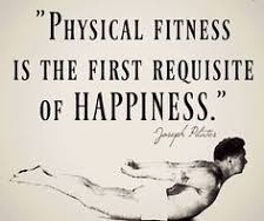Stronger Breath, Stronger Body: The Pilates Connection
- Deanna Paschke
- Feb 14
- 4 min read
"Breathing is the first act of life and the last - our very life depends on it." -Joseph Pilates |
Pilates isn’t just about sculpting long, strong muscles—it’s also about mastering your breath. And we’re not just talking about mindless inhales and exhales. We’re talking about prana, your life force, the breath that fuels every movement and keeps you flowing with ease.
Bringing awareness to the physiological process that occurs with each breath, allows us to foster greater strength, control, and stability. Let’s break it down.
The Muscles Behind the BreathThe act of breathing is a complex physiological process that involves not just the lungs, but a coordinated effort of various muscles working in harmony to facilitate the intake of oxygen and the expulsion of carbon dioxide. The diaphragm, a dome-shaped muscle located at the base of the thoracic cavity, plays a pivotal role in respiration. When we inhale, the diaphragm contracts and moves downward, creating a vacuum that allows air to flow into the lungs. This contraction increases the volume of the thoracic cavity, leading to a decrease in internal pressure relative to the outside atmosphere, thus drawing air in. To exhale, the diaphragm relaxes and moves back upward into its dome shape, reducing the volume of the thoracic cavity. This increases internal pressure, pushing air out of the lungs.Accompanying the diaphragm are the intercostal muscles, which are situated between the ribs. These muscles assist with the expansion and contraction of the rib cage during breathing. The external intercostal muscles are responsible for elevating the ribs during inhalation, further increasing the thoracic cavity's volume. In contrast, the internal intercostal muscles help in forced exhalation by pulling the ribs downward and inward (knitting the ribs), thereby reducing the space in the thoracic cavity and forcing every molecule of air from the lungs. |
Breathwork in Pilates isn’t just a side note—it’s the driving force behind control, connection and efficiency in every movement. Whether you're stabilizing your core, stretching to improve flexibility, or powering through a tough exercise, your breath is there to support you, acting as a vital link between your mind and body. Each inhalation and exhalation is important; inhaling provides the necessary oxygen to fuel your muscles, while exhaling helps to engage your core and release tension. This rhythmic breathing pattern helps you maintain focus on of your body’s movements, ensuring that each action is controlled, safe, and powerful.
Below are examples of different ways to actively breathe, each serving unique purposes and benefits that will transform your practice:
Lateral Breathing: The Pilates Essential
Muscles Used: Intercostals (muscles between your ribs), Transverse Abdominis (deepest core muscle), and Diaphragm |
Lateral breathing is considered the gold standard in Pilates because it engages your deep core without creating unnecessary tension in the belly. Instead of inflating your stomach, you send the breath into the sides of your ribcage - cue intercostal muscles - allowing your diaphragm to expand and contract laterally. This keeps your transverse abdominis engaged, supporting your spine and maintaining core stability.
When to Use It: Throughout most of your Pilates practice—especially during exercises that require core engagement (i.e. The Hundred or Planks). |
Diaphragmatic Breathing: The Relaxation Reset
Muscles Used: Diaphragm, Abdominals, Pelvic Floor |
Also known as abdominal or deep breathing, this technique involves engaging the diaphragm fully. When practicing diaphragmatic breathing, one inhales deeply through the nose - allowing the abdomen to expand as the diaphragm moves downwards. This method promotes maximum oxygen intake and encourages relaxation, making it particularly effective for reducing stress and anxiety.
When to Use It: During stretching, mobility work, or when you need to reset and relax |
Active Exhalation: Powering Up the Core
Muscles Used: Rectus Abdominis (your "six-pack"), Obliques (side abs), Transverse Abdominis (natural corset) |
Ever noticed how exhaling sharply makes your abs work harder? That’s because a strong, controlled exhale activates the deep core muscles to provide extra stability and power. When you forcefully exhale, the diaphragm moves upwards, which increases intra-abdominal pressure (crucial for stabilizing the spine and pelvis) and allows for more effective movement. This technique maximizes the effectiveness of your workout, helping solidify a strong foundation of connecting muscles that can prevent injuries and elevate your fitness.
When to Use It: Any move that requires deep core activation and stabilization (i.e. lunges, leg circles) |
Inhalation for Length: Exhalation for Engagement
Muscles Used: Diaphragm, Spinal Extensors, Abdominals |
This classical breathing pattern helps create space and control. Inhaling activates the spinal extensors, allowing you to lengthen the spine, while exhaling engages the abdominals and deep core, drawing everything inward for strength and stability.
When to Use It: Anytime we are working to find length in the spine on the inhale, and a deeper stretch on the exhale (i.e. spine stretch forward) |
Ultimately, breathing should be the foundation upon which every movement is built. Understanding and harnessing the power of your breath can lead to a more effective and fulfilling workout, enhancing both physical strength and mental clarity.
Think of your breath as your secret weapon, it:
energizes your muscles - preventing fatigue
centers your mind - grounding and focusing your energy
supports your core - fortifying strength from the inside out
reduces tension and stress - helping you twist and bend with ease




Comments